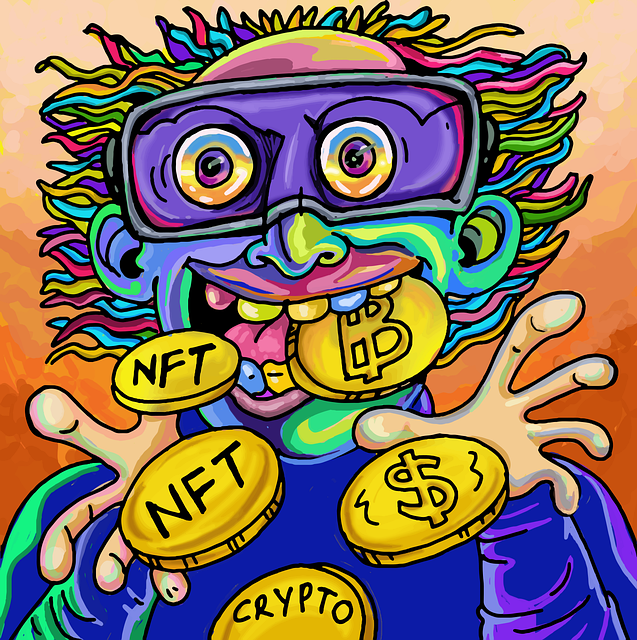The text explores the evolution of fundraising methods in the cryptocurrency sector, comparing Initial Coin Offerings (ICOs) and Security Token Offerings (STOs). ICOs, known for their decentralized nature and token sales, contrast with STOs, which adhere to existing securities laws, offering digital assets backed by tangible value. STOs provide enhanced investor protection and transparency, appealing to institutional investors and bridging traditional finance with blockchain. This ICOs vs STOs comparison highlights the shifting regulatory landscape, where STOs offer a safer and more regulated environment for cryptocurrency investments.
- Understanding ICOs: Initial Coin Offerings Explained
- Unlocking STOs: Security Token Offerings Demystified
- Key Differences: ICOs vs STOs Comparison
- Choosing the Right Platform: Factors to Consider for Crypto Trading
Understanding ICOs: Initial Coin Offerings Explained

Initial Coin Offerings (ICOs) have gained significant attention in the cryptocurrency space as a means for startups to raise funds. Unlike traditional stock offerings, ICOs involve the sale of new cryptocurrencies or tokens to investors in exchange for established cryptocurrencies like Ethereum or Bitcoin. This process allows projects to gain capital for development and expansion while offering potential returns for early adopters. However, with the evolving landscape, Security Token Offerings (STOs) have emerged as an alternative, often seen as more regulated and compliant compared to ICOs.
In an ICO vs STO comparison, it’s evident that STOs provide a more structured framework due to their alignment with existing securities laws. They represent digital assets backed by real-world value, such as equity or debt, making them subject to stricter regulations. While ICOs offer a decentralized and open approach, STOs aim to bridge the gap between traditional finance and crypto by ensuring investor protection and providing a more transparent trading environment.
Unlocking STOs: Security Token Offerings Demystified

In the world of digital assets, the evolution from Initial Coin Offerings (ICOs) to Security Token Offerings (STOs) represents a significant shift in how projects raise capital and engage investors. While ICOs have been the primary method for crowdfunding blockchain-based ventures, STOs offer a more regulated and compliant alternative. STOs represent securities, ensuring they adhere to existing financial regulations, which provides enhanced investor protection. This is particularly appealing to institutional investors who are now entering the crypto space in significant numbers.
In terms of ICOs vs STOs comparison, the key difference lies in the legal status and oversight. STOs issue tokens that represent ownership in an asset or company, similar to traditional securities. This allows for a more transparent and structured investment process, as regulatory bodies oversee the sale and distribution. As a result, STOs provide a more stable and trustworthy environment for both investors and issuers, bridging the gap between traditional finance and the decentralized world of blockchain technology.
Key Differences: ICOs vs STOs Comparison

In the dynamic landscape of cryptocurrency, understanding the nuances between Initial Coin Offerings (ICOs) and Security Token Offerings (STOs) is paramount for investors. ICOs, a predecessor in the space, involve the direct sale of tokens to fund a new project. This often involves less regulatory oversight, allowing for greater flexibility but also posing higher risks due to the lack of guaranteed value or utility behind the tokens. On the other hand, STOs represent a more recent and regulated approach where tokens are issued as securities, backed by tangible assets or future cash flows. This provides a safer environment for investors as these tokens are subject to financial regulations, offering better protection against potential scams or fraudulent activities.
When comparing ICOs vs STOs, one key difference lies in their legal status and investor protections. STOs aim to bring cryptocurrency into alignment with traditional financial markets by leveraging existing securities laws, ensuring that all offerings are transparent and compliant. In contrast, ICOs operate largely outside of this framework, which has led to numerous cases of fraud and manipulation. Additionally, STOs typically offer more liquidity through established exchanges, while ICOs often rely on private sales or decentralized exchanges, limiting immediate trading options for investors.
Choosing the Right Platform: Factors to Consider for Crypto Trading

When it comes to choosing a crypto trading platform, several key factors come into play. First and foremost, understanding your trading needs and preferences is essential. Different platforms cater to various types of traders, from beginners seeking simplicity to experienced professionals requiring advanced features. Consider whether you prioritize ease of use, security measures, or the availability of specific trading tools.
Additionally, the type of crypto assets you intend to trade should guide your selection. Some platforms excel in offering a wide range of cryptocurrencies, including altcoins and tokens, while others might focus more on popular coins like Bitcoin and Ethereum. Moreover, evaluating the platform’s support for Initial Coin Offerings (ICOs) versus Security Token Offerings (STOs) is crucial, especially if you’re interested in participating in token sales or diversifying your portfolio with security tokens, which represent ownership shares in a company.
When navigating the world of crypto trading, understanding the nuances between ICOs and STOs is essential. While ICOs offer a more decentralized approach, STOs bring regulatory clarity and investor protection. This ICOs vs STOs comparison highlights the key differences, empowering investors to make informed decisions. By considering factors like security, token ownership, and platform reliability, traders can choose the right crypto trading platform that aligns with their investment goals. Remember, whether you’re an experienced investor or just starting, a thorough understanding of these offerings is crucial for success in the dynamic crypto market.
